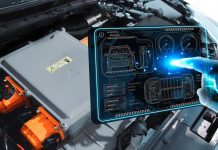BDC approach just makes younger buyers who crave continuity deal with more people. BY KIRK MANZO
Insanity is often defined as doing the same thing over and over, again and expecting a different outcome.
For the past three decades, our industry has taken the same basic approach to selling automobiles with traditional salespeople and sales managers at the core of that approach. Yet, numerous studies, the most recent of which by AutoTrader and Driving Sales, clearly show the current sales model MUST evolve.
Where to begin? We know consumers find the sales process takes too long and want to deal with as few points of contact (people) as possible. They want continuity. We must admit that both desires are reasonable.
Many dealership groups utilize a business development center (BDC), with business development representatives (BDRs) or customer service representatives (CSRs) to manage inbound calls and Internet leads. But, have we not effectively added in one more layer of contact or touch point for the consumer?
When surveyed, consumers often identify the F&I process as the slowest part of the buying experience. Again, what are our options?
A possible first adjustment would be to redefine the sales process with two objectives in mind: Reducing touch points and cutting time. Currently, many stores operate with four touch points: BDC, salesperson, sales manager and F&I/business manager. Why not cut these in half?
An alternative, two-tiered structure would use products specialists (PSes) and team leaders (TLs). The product specialist’s role would combine the activities of a BDC person while including initial steps of the actual sale, such as vehicle selection, presentation and demo drive.
Once those elements are completed, the team leader would complete the sale (discuss and confirm all figures, including F&I products) before turning final delivery back to the PS. specialist.
For this streamlining to work, the team leader’s role also would need to be modified. By combining functions of a sales/desk manager and the F&I/business manager, one touch point is eliminated. Now the customer is only dealing with two people vs. four.
However, ALL administrative functions – e.g., inventory management, reconditioning of used vehicles, other non-sales-related duties – would need to be managed by the GSM/GM or perhaps an inventory manager, for the system to work.
Depending on the volume per team, a document specialist or administrative support clerk support the team leader’s paperwork load and help maintain timely funding of contracts.
Currently, several dealership groups in the marketplace are beta-testing and running pilot programs to achieve a more customer-centric process. Technology vendors such as Dealer Track are on the forefront of delivering a seamless user experience about which both dealerships and customer can feel good.
A side benefit to such a fundamental restructuring of your sales department would be that the pool of candidates our industry must successfully attract and retain (the under-32 crowd) should find this model much more appealing. The industry only needs to deal with about 78 million of them as consumers and team members!








